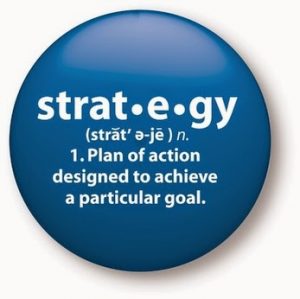 I wrote this article four years ago. But it fits well into the series on becoming someone who can produce, who can stand out… so read it.
I wrote this article four years ago. But it fits well into the series on becoming someone who can produce, who can stand out… so read it.
I am doing the 67 steps program… not once, but with every student of mine…
This article is a revelation to me. It’s on the importance of strategy, through what I see about myself and about all of us underachievers. It’s a long article, and slightly disheveled… please forgive the meandering.
I’ve started to get up early in November of last year.
I have noticed on myself that this step (Poor man/rich men) made me look if I am really into growing, or if I am secretly holding back…
How interesting… I have a lot more time, but I am not doing much with it.
My life isn’t getting better, and I am not doing anything about it. How come, I wonder.
So I start reading the 67-day participants messages, and it is getting clearer.
I have not set any targets, and I therefore don’t need a strategy.
Incidentally, I set one target about six months ago: to increase the number of visitors on the site by 50%. I had no strategy, and I have accomplished the specific result… but surprisingly there are more people, but my income level stayed the same… barely making it from rent day to rent day. I can see that there is a big difference between target and target… but I digress…
Whether you know it or not, every teacher is like you or me… bumbling…
If they weren’t teachers, it would be obvious to them that their knowledge comes out of their mouths instead of their actions.
There is only so much energy a person can have… and teaching takes a lot of energy, and also gives one a sense of satisfaction that makes one feel better than would be justified with one’s own results…
Now, why am I sharing this?
Because I see that what is missing for me is missing across the board.
At best you have some vague sense, a fuzzy picture, of what you should work towards… but no strategy, no plan.
Now, as I said, creating a plan is my weakest… least used strength of mine. You could call it a weakness, but I, for now, will call it a strength.
It’s not that I can’t… it’s that I don’t.
So this lesson may have a few parts that I need for my own life:
- What is your overall strategy for growth (any area and for my person)?
- Actions to take to cause liking what I am not strong at ( covered that in the “Running on Empty” article )
- Creating a plan or strategy: what are the steps?
Let me share some observations with you to see where we are at with regards to planning and strategy.
One of the 67 steps asks to observe your rich friends and your poor friends.
No student has said so far, because they could not see, that rich friends have a strategy to reach targets, and poor friends have no targets and no strategy. They live day to day. The closest approximation of target and strategy, for a poor person, is some vague wishing, yearning, daydreaming.
It takes courage to say: I am going for this target, and by gosh, I am going to reach it! and this is my strategy…
So we could also say: rich people summon courage in the face of fear… poor people retreat, shrink, and shy away.
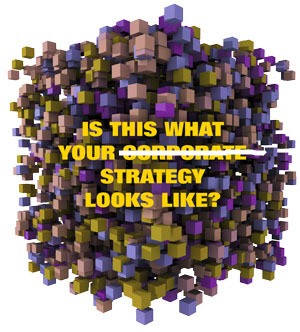 One main reason people don’t want to do the 67 steps program is because they are afraid of what they will find out, justifiably so.
One main reason people don’t want to do the 67 steps program is because they are afraid of what they will find out, justifiably so.
Even among the students I have, the level of courage varies widely… and therefore their results will vary widely.
Those who can summon more courage… those people will produce more results.
Poor people have magical thinking, that works through jumps, manifestation, and not through a plan and work.
When I say “poor people” I don’t only mean money. I mean a life… although money is an excellent tracker.
Now, let’s see how to turn this around.
You’ll start where you are at… poorness is measured on a scale of 1-100…
The method of creating a solid ground to build on is through using ‘knowledge through observation’
This is the same method as the “hitting ground” method: you take an inventory of where you are, what you know, what you have as resources, what you lack, etc.
The more complete this inventory the more solid the ground is… you can only take off from really solid ground.
Poor people I know lie here, color things beautiful… and don’t do complete work. It takes courage to tell the truth. That is the first place you’ll need summon courage.
 The 67 steps program can be considered this inventory process. Without first providing the knowledge: lecture, you would not know where to look… and you would not be able to answer the questions you need to answer to have an accurate inventory.
The 67 steps program can be considered this inventory process. Without first providing the knowledge: lecture, you would not know where to look… and you would not be able to answer the questions you need to answer to have an accurate inventory.
You may notice as you are listening to the lecture, you nod, you agree… But as soon as you get to the questions… you get foggy, dumb, confused. I have noticed it on myself, with every single step, so far.
To the degree you are able to clear up your brain from the incoherence, to the same degree you will be able to see clearly where you are at.
It’s actually hard. Emotionally, intellectually. You need to be OK with “I see what I see and don’t see what I don’t see.” It is a total workout for the eyes, the intellect, the emotions… only the best hangs in there. But unless you do this workout, your delusion about yourself will get even deeper through listening only to the lectures. Your newfound knowledge will be worthless for your life because it will be mind-knowledge. Filtered. Filtered through your Precious I… inaccurate.
If you do the work in earnest, it is hard to escape despair to knock on your door. Your perfect image of yourself isn’t as perfect… 🙁
Around the funeral test step, there is a huge drop-off… people cannot face the tiger. They cannot face that their life has been delusional, and they don’t measure up to their ideals.
My take on it is this: Of course. That’s why you are here! So that step by tiny step, you can become the person who can be…
Dropping off is giving in to the delusion, and giving up on the potential: rejoining the forever poor people
Despair and depression are normal: you have to go through them. Most don’t. If you stay in the game, the light is just beyond the dark.
You decide if it is worth it.
My estimate is that about 100 thousand people bought the 67 steps. 3.5 percent of them actually started to do the work. Then as it got harder and harder to face the music, they sloughed off, and only 1% remained in the game.
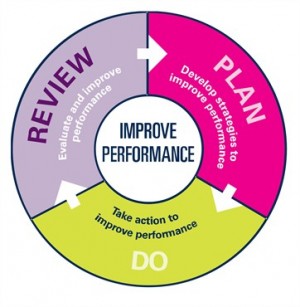 If we consider that the 67 step program is designed to be like a spiral staircase, 1% got to the second floor.
If we consider that the 67 step program is designed to be like a spiral staircase, 1% got to the second floor.
What you want: the life worth living, is around the eighth floor…
You can’t even see that high… can you?
OK, from the knowledge-strategy-action phases, we have covered the knowledge: the inventory.
Strategy: everyone’s weak point: how do 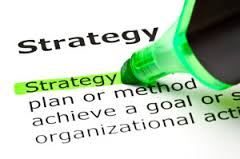 you do it? How do you create a map to get from point A to point Z?
you do it? How do you create a map to get from point A to point Z?
Honestly, as I have said, this is not my strong suit.
But… when I look back, I have coached people in their projects in the Self Expression and Leadership Program some eight times. So let’s see how it went…
I must confess that I have never used any strategy in my own life, in my businesses. Now I can see why I never made it big in business… Darn… but now, at least, I see it.
So, steps to create a strategy:
Step one: What is the actual goal? It has to be something that you can measure. Or a yes/no. Something specific result that you either did it or didn’t do it.
Here we’ll see another difference between poor people and rich people.
Poor people create pie in the sky goals. Rich people create small attainable goals, the type that if they succeed at it, they can do it over and over again… for a big goal.
In online marketing, most people struggle to create their first dollar: sell something for a dollar, or five, or ten… sell something through online marketing.
Once they do, they got the key to the kingdom: the method to selling more, or higher priced products is eerily similar.
I am currently experimenting with getting customers from Facebook. So far nothing seems to work, but the strategy is to test and test and test, until I hit pay dirt… so to say. Or find out that people on Facebook are not interested.
Step One
In this step, you are building a ladder… The first rung needs to lead to the second rung, not some isolated result. It needs to have the entire ladder as its context.
How do you formulate this goal?
A goal has two parts:
1. tangible
2. intangible
- The tangible: I will have X result by y time is the formula
- The intangible: what that result opens up is this:… more fun, serving people, fulfillment, enjoyment… something that either you experience, or everyone will experience. It’s one of the most important results, but I will teach that in another article.
Step two: Reality check:
- Do you have what it takes? Knowledge, skills, talent, time, strength, capacities, to accomplish that step in by the given date?
- Do you know other people with similar skills succeeding at that?
- If not… scratch the project and go back to formulating the goal. Make it doable this time.
For example, a friend of mine created a project that he doesn’t have the time to work on… But he has 30 minutes a day, so if he went back to step one, he would create a project that is rung 1 of the ladder, a result that can be accomplished in 30 minutes a day.
Don’t compare apples with oranges here… be realistic, or you’ll build on mud… again.
The third step is to break up the myriad of actions to phases delineated by milestones:
This is the hardest step, because you need to see that projects are not linear. And more importantly, you cannot start with doing…
You need to expect the results to follow a proven pattern:
phase 1: formulation: no visible results. Lots of talking
phase 2: concentration: you need to put in 100 units of energy to get back 1 unit of result
phase 3: momentum: you put in one unit of energy, and get one unit of result back
phase 4: stability: this seems to be a phase where you are getting better and better at doing what you need to do
phase 5: flow… you put in one unit of energy and get 100 units of results.
Each project needs to go through these phases. Most people give up too early, or alternatively block the flow, when it would come.
That is a problem we’ll deal with when it comes.
Poor people never go past concentration… they want instant result, or alternatively, they are stingy with their energy, and therefore never get to momentum.
We never witness famous and successful people in the earlier phases… so poor people think they didn’t happen.
So you want to create milestones, smaller parts of the whole accomplishments that you’ll get done by the date of the milestone.
Of course I didn’t quite get to the actions step… And also didn’t say that each milestone is a mini-project on its own right…
Choosing effective actions, actions that actually bring about the results is difficult, and that is another difference between poor people and rich people: poor people will take ineffective actions… that is the secret of their poverty.
This is, approximately, what I know about how to create a strategy.
Now, strategy could also include other people… or learning new skills… but I prefer to look at these as rungs of the same ladder, and as individual projects. That is what works for me best.
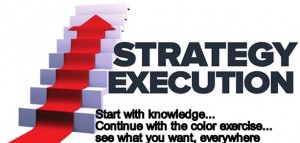 If you see anything useful for what you are doing right now, please let me know in the comments.
If you see anything useful for what you are doing right now, please let me know in the comments.
And if you have had enough of being poor, or mediocre, apply to do the 67 step coaching program…
